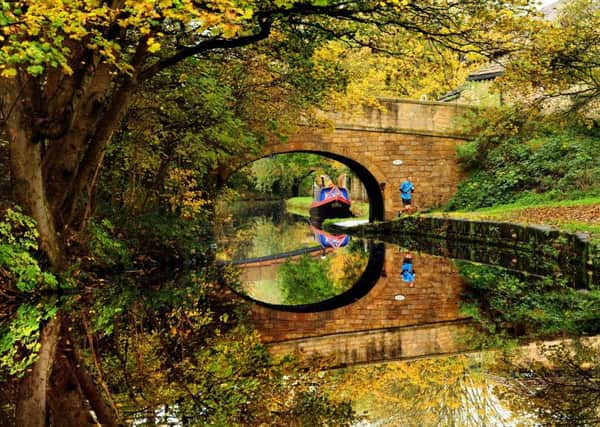Working life of a picturesque Leeds backdrop for leisure


Construction of one of Britain’s longest canals began in the late 18th century as a way of improving trade links between the growing industrial towns and cities of the North.
It was slow going. Stretching 127 miles and designed to pass by important limestone and coal mining areas, it represented a major feat of engineering and was only completed in 1816, some 46 years after work began.
Advertisement
Hide AdAdvertisement
Hide AdTogether with the Aire & Calder Navigation, which it meets at Leeds, it offered a coast-to-coast route between the Irish Sea and the North Sea, though not a proper connection until the Stanley Dock branch in Liverpool opened in 1846.
A spokesman for the Canal and River Trust said: “The canal’s most important cargo was coal closely followed by merchandise. Thanks to the combination of local heavy industry and the decision to build the canal with broad locks, that unlike many waterways, the Leeds and Liverpool was able to compete successfully with the railways throughout the 19th century.”
In fact it remained open for much of the 20th century. However, it couldn’t withstand the passage of time forever. Britain’s burgeoning motorway network offered a cheaper and quicker way to transport goods and combined with the introduction of natural gas and the subsequent closure of the canalside collieries, commercial traffic on the waterway eventually went into dramatic decline. By the time the last cargo of coal was carried along the Leigh Branch of the Leeds and Liverpool canal to Wigan Power Station in 1972, large stretches were already in danger of becoming overgrown.
However, thanks to the efforts of volunteers who hard to keep the canal open and navigable, the Leeds and Liverpool Canal wasn’t consigned to history and since the turn of the 21st century it has continued to thrive thanks to the opening of the Ribble link and Liverpool Canal link.
Technical data: Nikon D3 camera, 80-200mm lens with an exposure of 1/500th second @ f4, ISO400.